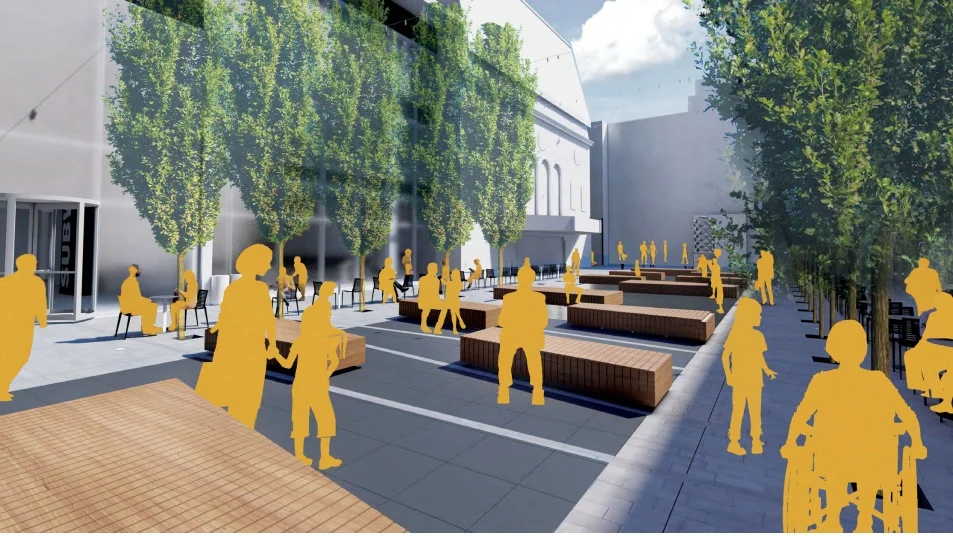Peace Plaza prototype sparks discussion
If you follow the newsy side of Rochester Facebook, you may have come across some conversation about a new installation of public furniture downtown.
Earlier this month, a metal object, billed as a piece of universal design furniture, was set up on Peace Plaza. Its aim is to be a multi-use piece of furniture accessible to anyone. The response online to the prototype has ranged from condemnation to curiosity.
Tomorrow morning, there’s a chance some of those comment threads will come to life as the Destination Medical Center EDA, 195 South Broadway, hosts a lobby talk on universal design. The event goes from 8 to 9 a.m.
Many observers on Facebook thought the furniture fell short of its intended goal. One parent expressed concern over the object’s sharp edges, while some worried that the entire thing would heat up too much in the summertime sun. Others accused the installation of attempting to re-invent the bench, and some accused it of being a poor bike rack.
“It’s not a bike rack,” clarified DMC’s Patrick Seeb in the comment section of one Facebook post. A vertical slot in the object, which is shown holding a bike in a promotional photo, is also meant to be a place where the wheels of a wheelchair can be rested, he said.
Universal design is about making cities and spaces accessible to everyone, Seeb told us in an interview. “I think of it as ADA compliance version 2.0.”
“Done well, it doesn’t broadcast itself. When it’s done well, it’s ubiquitous and it doesn't scream out that this is an accessible place. It just is,” he said.
Examples of universal design include moving sidewalks in airports, signage that has sound options, or more textured curb cuts at crosswalks. Many of these modifications made specifically for accessibility turn out to be almost universally popular. For example, curb cuts make sidewalks and street crossings accessible for those using wheelchairs, but they also appeal to skateboarders or parents with strollers.
Seeb said that DMC has asked designers to think about these things as they design Heart of the City. In time, Seeb hopes, some of Rochester’s innovations will be exported elsewhere.
“After all, we are leveraging the support from the state of Minnesota, and one of the things we ought to give back to the people of Minnesota are inventions, if you will, that can aid other communities,” said Seeb.
As for the metallic bench on Peace Plaza? Seeb said one of its goals was to create a conversation. To that end, it is a success. Whether or not it will live up to the lofty ideals of universal design has yet to be seen.
“This one is intended to be around for three months,” he said. “We anticipated making modifications every 30 days and moving it to different locations, but I think with the feedback we’ve gotten and our own observations, there will be some modifications that we’re going to be making more quickly.”
The DMC lobby talks are informal events, with no set speakers and no set schedule. Attendees are encouraged to simply ask a question and begin conversations with the DMC EDA team. More info can be found here.
Bryan Lund covers politics and culture for Med City Beat.








